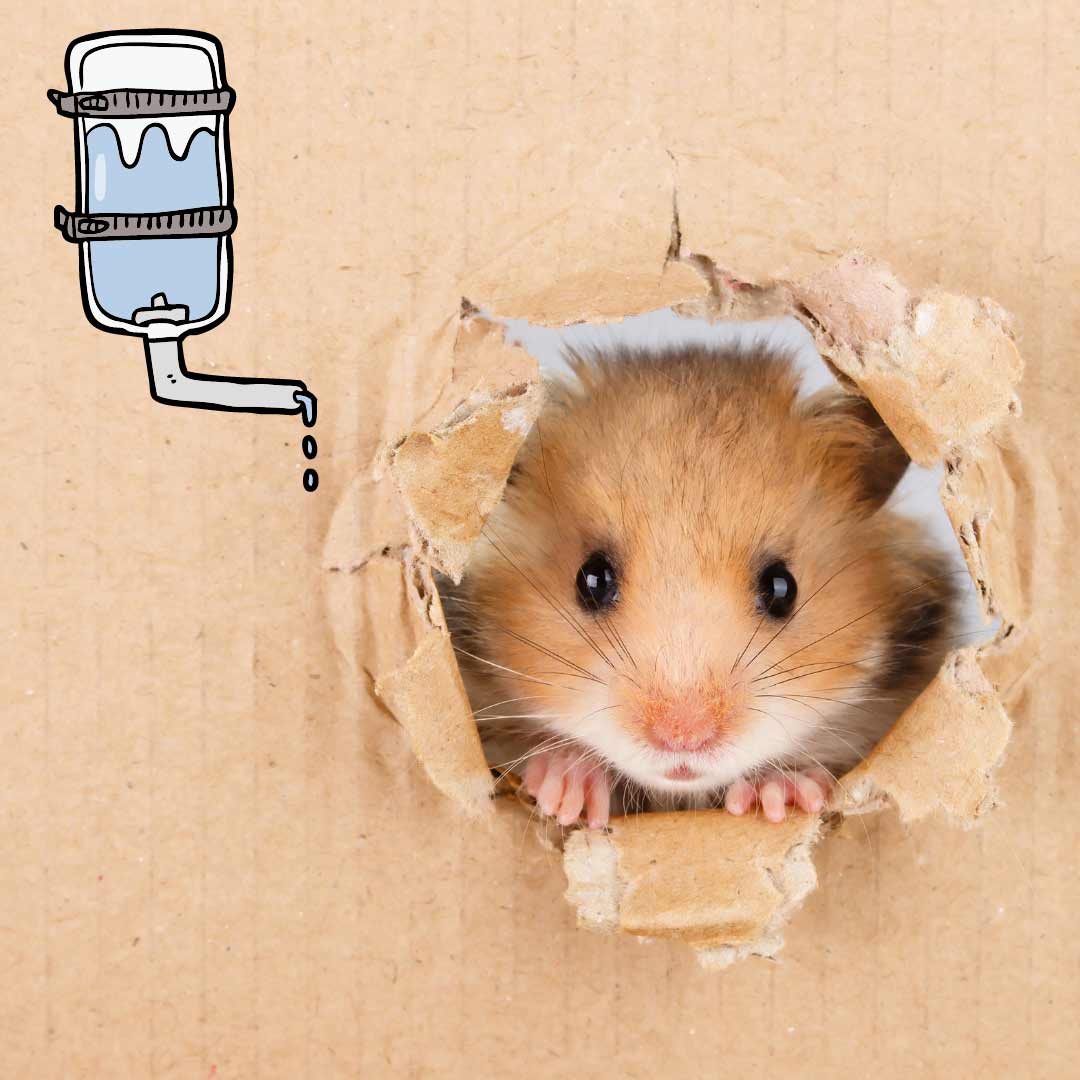Hamster for your thought?

If you are thinking about getting a pet hamster for you or a child, it is important that you know how to choose one, what supplies you need, and how to feed and care for your new pet. Hamsters are typically low-maintenance pets but proper care is essential to keeping them happy and healthy.
While you might be a bit hesitant to keep a rodent as a pet, you may be surprised to learn that much of what you know about rodents may be false. The animals are extremely clean and they often do everything in their power to keep their environments, and themselves, tidy. They urinate in designated areas of their habitats and litter can be placed in this space for easy cleaning. When the animals do use the litter or bedding, you may be surprised at the light odour coming from the cage. Hamsters are omnivores but eat very little, if any, meat. High-protein foods, like meat, cause urine to smell strongly of ammonia which they do not.
They don't require a lot of attention, get enough exercise running on their wheel, and are cute, cuddly, and pleasant to hold. They can make an excellent starter pet for some children.
Unfortunately, hamsters don't come with care instructions so we thought we would give you a glimpse of what you are getting into!
- Choose the right breed and hamster: hamsters typically live about two years, and are usually best housed alone. Hamsters come in a variety of colours and breeds, and different breeds are known for distinctive traits. Know which breed you are purchasing or adopting before you get one. Not every hamster in the pet store is in optimal health, so choose an active hamster ideally one eating or running around the cage. If the cage seems to have a few sick hamsters, it is probably best to avoid buying any hamster from that group since hamster diseases are very contagious.
- Age: A hamster might seem like the perfect pet for a small child, but this is not the case. They require careful, gentle handling, may bite, and don't generally feel safe in smaller hands. You need to build a healthy and safe relationship between your pet and the child. Hamster age is also something to consider. Young hamsters will be easier to train and hand-tame than older hamsters, who may have had bad experiences or have never interacted with humans.
- Hamster Cages and Supplies: There are many hamster cage options available both online and at pet stores but some cages are definitely better than others. Choose a cage that has good ventilation, is easy to clean, has space for a hamster to run and explore, and won't allow your hamster to escape. Inside the hamster cage you'll need to provide soft and absorbent bedding, a water bottle, an exercise wheel, chew toys, a house, and food dish. It is better if the bedding is made of natural materials like Timothy hay, orchard grass, brome hay, botanical hay, and oat hay. A hamster without anything to keep its teeth occupied may choose to chew on her cage or enclosure. Pet stores offer special chewing toys and blocks made just for hamsters. Depending on the type of cage you keep your hamster in, you will want to clean the bedding on a weekly basis and change the entire bedding once a month.
- Food and Nutrition: Most people assume that a store-bought bag of hamster seed is what is best for a hamster but they actually need a variety of proteins, fruits, and vegetables to keep them healthy and happy. Hamsters may pick and choose what they want to eat from seed mixtures and therefore will not receive a balanced diet. Supplementing your hamster's regular food with small pieces of fresh fruits and vegetables is a great way to help your pet enjoy her food while getting balanced nutrition. Always make sure that your hamster's chow, whether block or kibble, is served in a bowl or dish of some sort. Hamsters may ingest their bedding otherwise, and this may cause serious health issues. Hamsters don't like to eat leftovers. For optimum nutrition change the food out on a daily basis.
- Health and Grooming: Hamsters groom themselves, and often do it more than once a day. There is no need to bathe, comb, or help them with this in any way! It is a best practice to take a pet hamster to see your veterinarian once every 6 months or yearly to check for potential health concerns.
- Cuddling and Hand Taming: Hamsters are not aggressive pets but if they are scared or startled they may bite. Hamsters can be tamed to be very sweet little pets but for anyone who has ever been bitten by one, they know hamster bites definitely aren't fun especially for young kids. Young hamsters are typically easier to hand-tame, but you can start teaching your hamster not to bite by making sure you don't startle it. Try not to wake it up, and instead entice it to climb onto your hand on its own using a treat. This will allow you to gain your hamster's trust over time, and allow you to pet and hold your hamster while avoiding being bitten. If the hamster is for your child, nurture a very soft, gentle and trusting relationship between the two so they are both comfortable in each other’s presence.
So that’s our two cents on having these rodents at home and we hope you can find the perfect pet for you! Please remember that apart from approaching a pet store there are a lot of abandoned and rescue hamsters in need of a loving home in all your rescue centers as well! Do open your home and heart to the right fit no matter where he comes from.